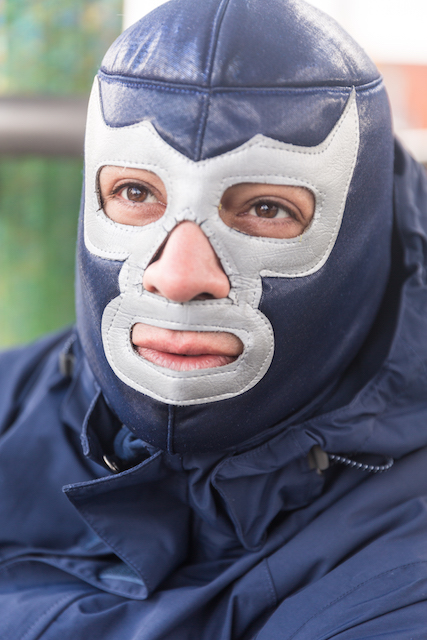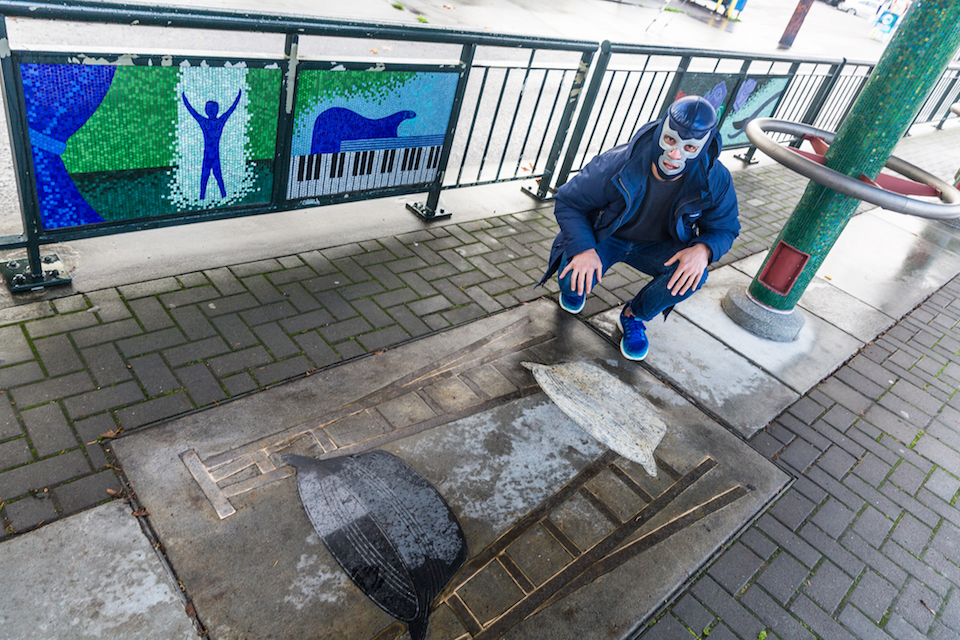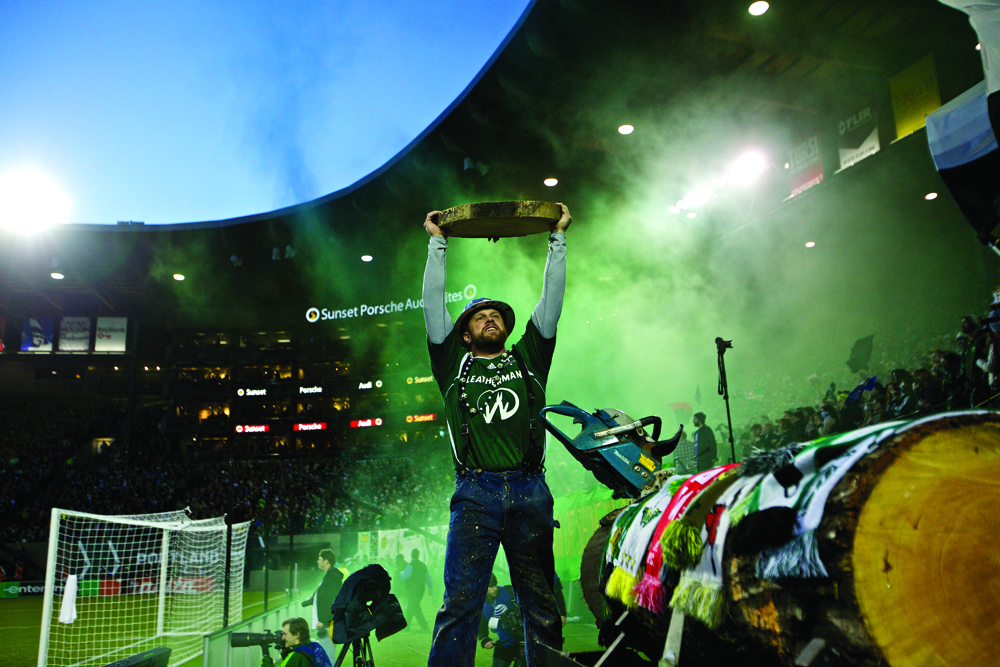written by Lee Lewis Husk | photos by Joni Kabana
As he pulls the mask over his face, artist Victor Maldonado mutates into the Blue Demon, a Mexican lucha libre—freedom fighter. “It’s the double identity of being insiders and outsiders, knowing the script but not all the rules in the ring,” he said, referring to his Mexican birth, immigration and ultimately, American citizenship.

“The mask symbolizes the struggle between two forces—English versus Spanish, U.S. culture versus Mexican culture, white-collar versus farmworker,” said Charles Froelick, owner of Froelick Gallery in Portland, which represents Maldonado. When worn in a Mexican wrestling ring, the masks theatrically show the disparity between two sides—good and evil, comedy and tragedy, he said.
The son of field workers in California’s Central Valley, Maldonado has found expression through many art forms, including painting, sculpture, photography and creative writing. He graduated from the California College of Art in 2000, moved to Portland in 2001 and earned an MFA in painting and drawing from the School of the Art Institute of Chicago in 2005.
“There are a lot of uncommon similarities between artists and field workers. ‘Where is my home? Who will remember me?’” he said.
In some paintings, Maldonado uses symbols for the migrant experience—a grocery cart as a mobile home, elephants that travel long distances and guard dogs in a rising security state. “It’s about upsetting stereotypical images about me as a Mexican-American,” he said.
For the past ten years, Maldonado has been helping students find their artistic voices at the Pacific Northwest College of Art where he’s an assistant professor. He finds similarities between students and migrants. “Field workers need platform, and students need platform to make their own choices,” he said.
He has begun integrating his work with Bienestar Oregon, a 35-year-old Hillsboro-based housing and advocacy network to meet the needs of Latino-Americans. He hopes to encourage migrants to create their own lucha masks for self-awareness and self-actualization. “These are not disempowered workers,” he said. “As artists, we have a history of making pictures that are complete constructs of society. My work is connecting people to themselves.”
His work is on display at the Froelick Gallery, the Tacoma Art Museum, the Museum of Fine Arts in Houston and in public spaces in Seattle and Portland’s TriMet bus stops.









